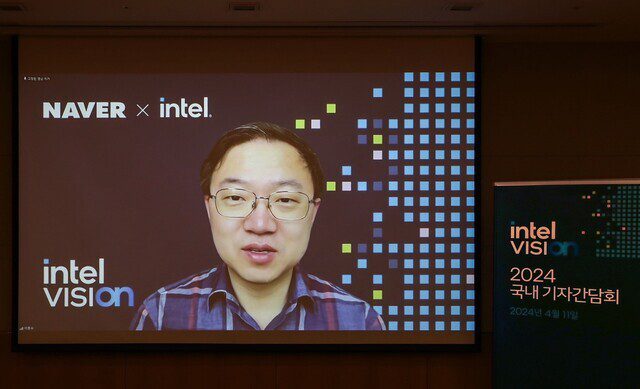- Intel and Naver join forces to challenge Nvidia’s dominance in the AI chip market.
- The collaboration aims to build an independent AI ecosystem using Intel’s chip technology.
- Naver Cloud to develop software for large language models (LLM) based on Intel chips.
- Initiative seeks to counter Nvidia’s closed ecosystem strategy and promote diversity in AI.
- The partnership entails collaboration with South Korean universities and startups.
- Intel’s AI accelerator Gaudi 2 serves as the cornerstone of the new software infrastructure.
- Open-source approach to democratize access to AI technology and reduce reliance on Nvidia.
- Uncertainties remain regarding the competitiveness of Intel’s AI chips and domestic research capacity.
- Naver Cloud’s decision to adopt Intel’s Gaudi2 accelerator is pending thorough testing and evaluation.
Main AI News:
In a bid to challenge Nvidia’s stronghold in the AI chip market, Intel and Naver have formally announced their partnership in the realm of artificial intelligence. This strategic alliance between the two tech giants seeks to establish an independent AI ecosystem leveraging Intel’s chip technology, thereby breaking Nvidia’s near-monopoly grip on the industry.
The recent joint venture was unveiled during a roundtable held by Intel Korea and Naver Cloud in Seoul, signaling a pivotal moment in the AI landscape. Naver Cloud, a subsidiary of the renowned web portal Naver, will spearhead the development of software tailored for large language models (LLM) utilizing Intel’s chip architecture.
At the heart of this collaboration lies a concerted effort to disrupt Nvidia’s dominance, particularly in light of its proprietary programming platform CUDA. By offering an alternative to Nvidia-centric solutions, Intel and Naver aim to foster a more open and diverse AI ecosystem.
Nvidia’s strategy of cultivating a closed ecosystem has entrenched its position, commanding over 90 percent of the AI chip market. However, Intel and Naver Cloud are charting a different course by embracing openness and collaboration. Through partnerships with South Korean universities and startups, they seek to cultivate a software infrastructure independent of Nvidia, underpinned by Intel’s AI accelerator Gaudi 2.
By embracing an open-source approach, Intel and Naver Cloud aim to democratize access to AI technology, making it more accessible to a broader audience. This move not only serves to expand Naver’s footprint in the AI landscape but also underscores the potential cost advantages offered by Intel’s chips compared to Nvidia’s premium offerings.
Lee Dong-soo, overseeing AI semiconductor strategy at Naver Cloud, emphasized the significance of this alliance in fostering international collaboration and advancing AI development. By championing domestically developed software on a global scale, the partnership aims to empower developers utilizing Intel’s Gaudi chips, particularly in the realm of LLM.
Nevertheless, uncertainties loom over the success of this ambitious venture. Questions linger regarding the research capabilities of domestic entities and the competitiveness of Intel’s AI chips. Naver Cloud’s limited prior experience with Intel chips further adds to the uncertainty, with decisions on adopting the Gaudi2 accelerator pending thorough testing and evaluation.
As the collaboration between Intel and Naver unfolds, the tech industry eagerly awaits the outcome of this endeavor, poised to witness whether this alliance will indeed disrupt Nvidia’s AI hegemony and pave the way for a more diverse and competitive landscape in artificial intelligence.
Conclusion:
The collaboration between Intel and Naver marks a significant shift in the AI chip market, signaling a challenge to Nvidia’s long-standing dominance. By fostering an open and collaborative ecosystem, Intel and Naver aim to diversify the market and provide alternatives to Nvidia’s proprietary solutions. However, uncertainties surrounding the competitiveness of Intel’s chips and the capacity of domestic entities underscore the challenges ahead. Nonetheless, this partnership heralds a new era of competition and innovation in the AI landscape.

